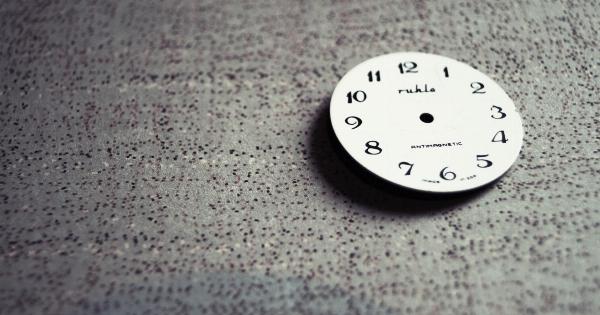Sleep is an essential part of our lives, allowing our bodies and minds to rest and rejuvenate. However, in the fast-paced world of the 21st century, many individuals find themselves struggling with sleeplessness and insomnia.
The advancements in technology, increasing work pressure, and constant connectivity have all contributed to the rise of sleep disorders. In this article, we will explore the various reasons behind sleeplessness in the 21st century and discuss strategies to promote healthy sleep habits.
1. Technology Addiction
One of the major contributors to sleeplessness in the 21st century is technology addiction. With the proliferation of smartphones, tablets, and laptops, people are spending more time than ever before engaging with screens.
The blue light emitted by these devices can disrupt the production of melatonin, a hormone that regulates sleep-wake cycles, making it harder to fall asleep.
2. Work-related Stress
In the modern world, the lines between work and personal life are often blurred. Many individuals find themselves working long hours, constantly connected to their jobs through emails and notifications.
The stress and pressure that come with these demanding work environments can lead to heightened anxiety and insomnia.
3. Social Media and Comparison
Social media platforms have become an integral part of our lives, allowing us to connect with others and share our experiences.
However, constant exposure to carefully curated images and updates from others can lead to feelings of inadequacy and insecurity. This comparison-driven mindset can cause anxiety and negatively impact sleep patterns.
4. Artificial Lighting
The 24/7 accessibility of artificial lighting has had a significant impact on our sleep patterns.
The bright lights emitted by street lights, screens, and lamps can disrupt our circadian rhythms, making it harder to fall asleep and stay asleep throughout the night.
5. Work Shifts and Jet Lag
Many individuals in the 21st century work in shift-based jobs that require them to work irregular hours. This disruption in their sleep-wake cycle can lead to sleep disorders such as insomnia.
Additionally, frequent travel across time zones can result in jet lag, disrupting sleep patterns and causing daytime sleepiness.
6. Lack of Physical Activity
The sedentary lifestyle that has become prevalent in the 21st century can also contribute to sleeplessness.
Regular physical activity has been shown to improve the quality of sleep by reducing stress and increasing the production of endorphins, which promote relaxation and a sense of well-being.
7. Stress and Anxiety
The fast-paced nature of the 21st century has brought about an increase in stress and anxiety levels. Constantly juggling multiple responsibilities, financial pressures, and societal expectations can all impact sleep.
Chronic stress and anxiety can make it difficult to relax and fall asleep.
8. Caffeine and Alcohol Consumption
Many people rely on caffeine to stay alert during the day, but this stimulant can have long-lasting effects on sleep. Consuming caffeine too close to bedtime can interfere with falling asleep or staying asleep.
Similarly, while alcohol may initially make individuals drowsy, it disrupts the normal sleep cycle, leading to fragmented and poor-quality sleep.
9. Environmental Factors
Environmental factors such as noise, temperature, and comfort can significantly impact sleep. Excessive noise pollution, uncomfortable bedding, and extreme temperatures can make it harder to fall asleep and maintain a deep sleep throughout the night.
10. Lack of Sleep Education
Despite the prevalence of sleep disorders in the 21st century, many individuals lack proper sleep education.
Understanding the importance of sleep, establishing a consistent sleep routine, and practicing good sleep hygiene can go a long way in promoting healthy sleep habits.
Conclusion
In the 21st century, sleeplessness has become a common problem that affects many individuals.
The factors contributing to sleep disorders are numerous, ranging from technology addiction and work-related stress to social media comparisons and environmental factors. It is important for individuals to prioritize their sleep and take proactive steps to establish healthy sleep habits.
By understanding the root causes and implementing strategies to mitigate sleeplessness, we can ensure that we get the restful sleep our bodies and minds need to thrive in the modern world.






























